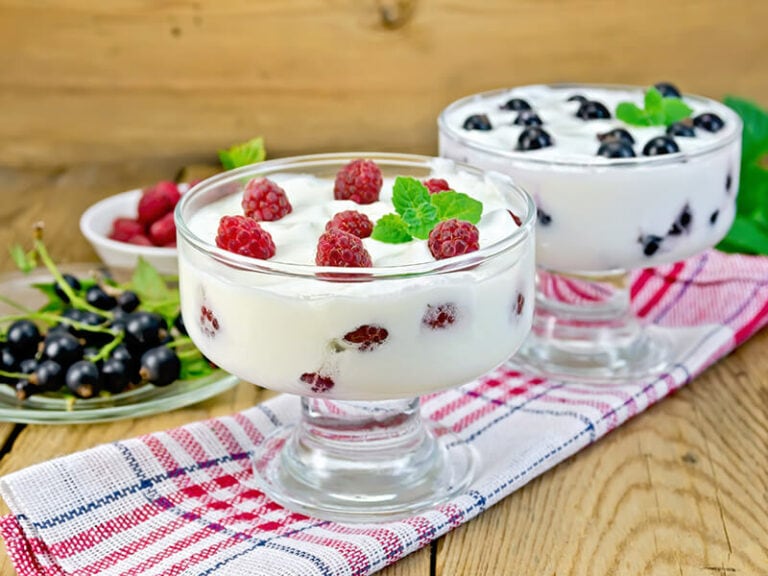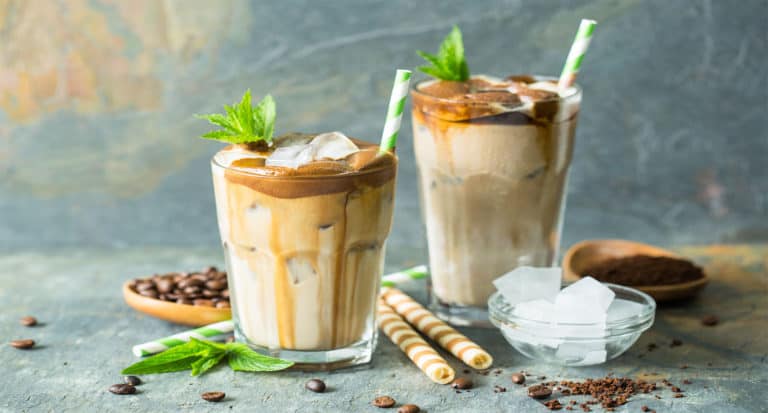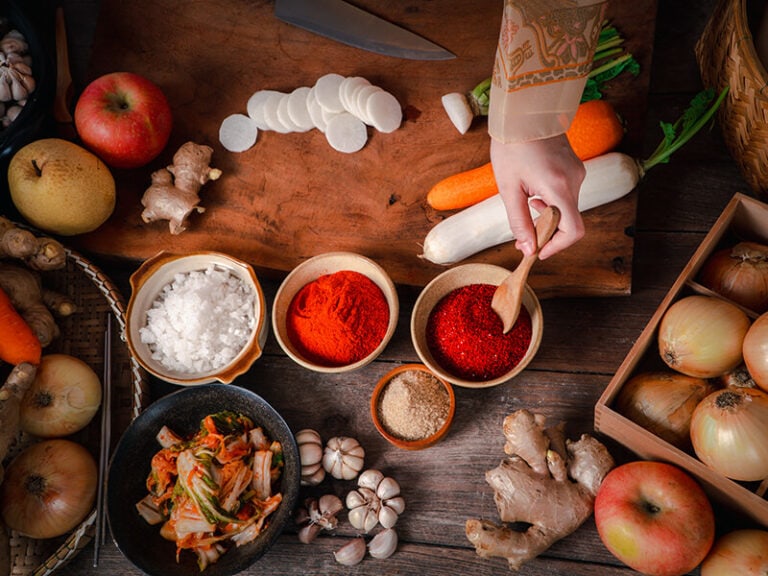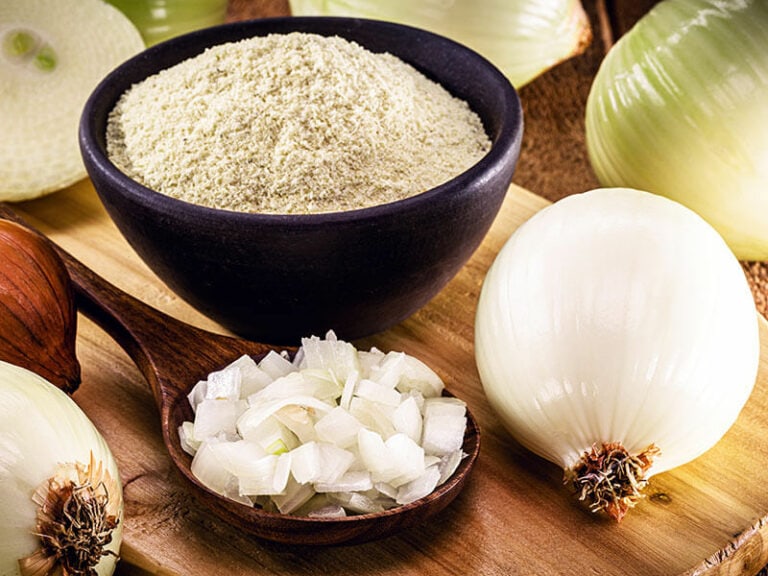When it comes to Dijon mustard vs. yellow mustard, there is a world of differences to talk about. Learning what they are and how they impact the ways you use mustard is pretty important. But first, have a look at the big picture.
Mustard is a type of condiment made from ground mustard seeds. Different types come with various flavors and textures. Their uses are quite diverse: from making marinades or dipping sauces to flavoring hot dogs, burgers, and more.
Today, this popular condiment is consumed by millions of people around the world. Besides their powerful flavor, mustard seeds are high in antioxidants, which are beneficial in protecting your body from diseases. (1)
Now, let’s get to the main point! I will describe Dijon and yellow mustard before moving on to the differences between the two. Stay tuned to check out the other options that you can use instead of mustard.
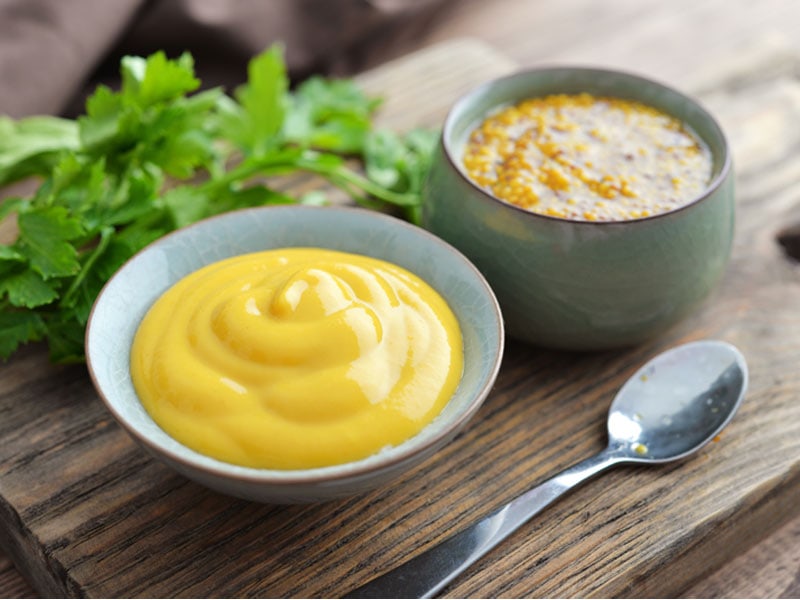
About The Heavenly French Taste Of Dijon Mustard
Let’s talk first about this one. Everybody thinks about Dijon mustard as a fancy mustard, but maybe something you can miss about this special seasoning.
Overview
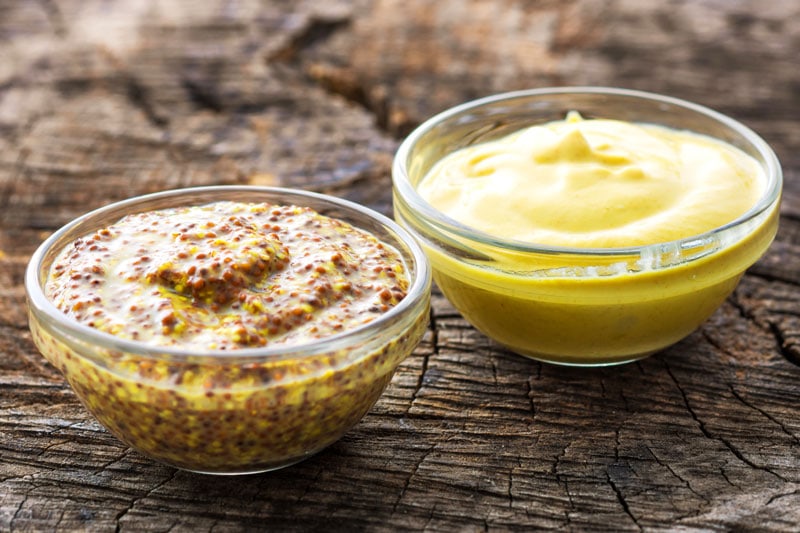
Dijon mustard originated from Dijon, a town in Burgundy, the central region of France. That place has produced exceptional mustard since the Middle Ages, but its product only started catching the world’s attention in the 19th century.
The main ingredients of Dijon are brown mustard seeds, herbs, salt, and some liquids, such as white wine, water, and vinegar. The seeds can be moderately crushed (whole grain) or finely ground, creating two options. The former has a coaster texture.
The liquid ingredients found in Dijon mustard have changed over its long history. It was initially made with verjuice (juice from unripe wine), which later gave way to a mixture of water, vinegar, and, sometimes, white wine. (2)
While mustard products from Dijon often incorporate brown mustard seeds, many recipes choose black mustard seeds or a mix of both varieties for more heat and a stronger smell.
Let’s travel to the cradle of Dijon mustard and discover why it is so good!
Uses
So what is Dijon mustard used for? More than you can think! The number of culinary possibilities with this French condiment is endless, but I can name some of them:
- Toppings for pasta, sandwiches, hamburgers, etc.
- Salad and coleslaw dressings
- Sauces to go with fast food. The most popular choice is Dijonnaise (a combination of mayonnaise and Dijon mustard).
- Deviled eggs
- Marinade for fish and meat (Dijon mustard is excellent at tenderizing tough cuts)
- Spread or coating for seafood, pork, chicken, etc.
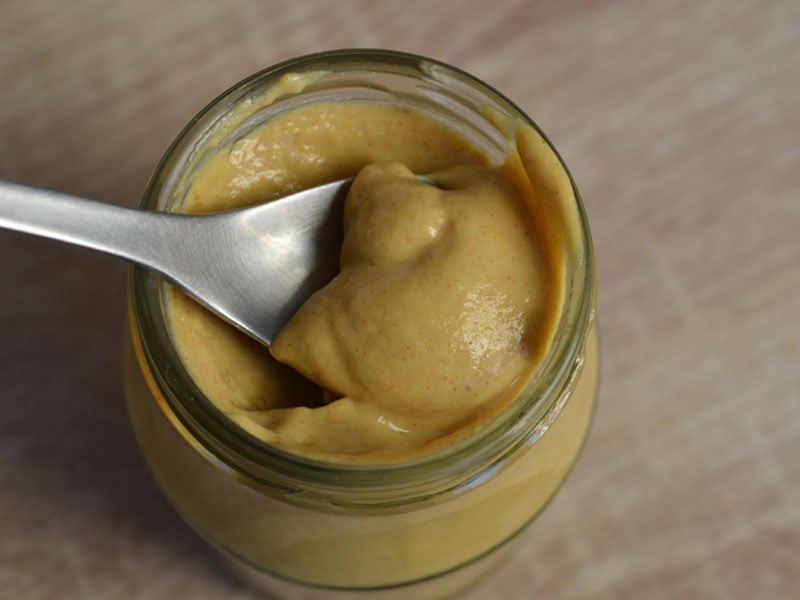
Yellow Mustard – The Popular American Choice
On the other side, far away from France, yellow mustard is a classic and traditional choice whenever somebody thinks about mustard in general. Grab some information down here
Overview
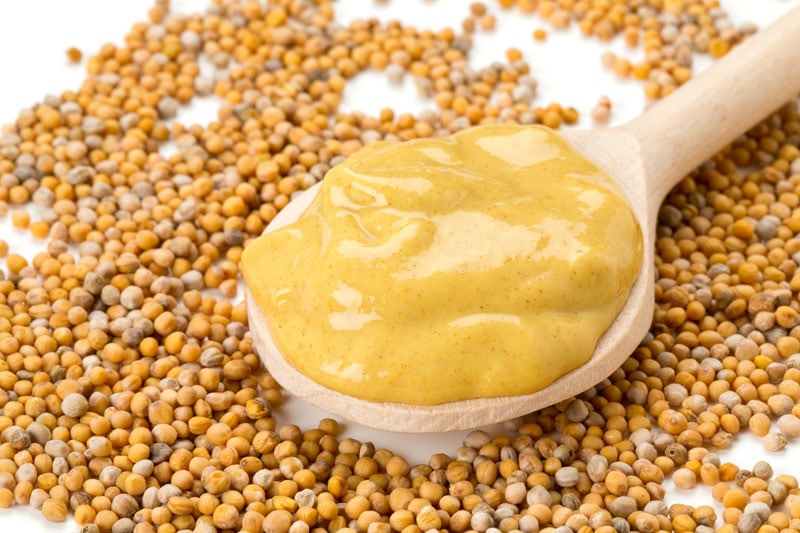
Mustard has a long history, dating back to ancient Africa and China. However, that of yellow mustard, also known as American mustard, is relatively brief. It was invented by George French, who founded the famous brand French’s Mustard in 1904.
Originally meant as “cream salad mustard”, this type of mustard is now a cornerstone of American cuisine, appearing in any dish. From hot dogs to seafood, from marinade to dipping sauces, Americans can’t live with this golden, creamy condiment.
Yellow mustard is made by a mixture of ground yellow mustard (yellow mustard powder), liquids (usually vinegar, beer, or wine), and other spices. But the most spectacular one added to the ingredient is turmeric, which creates the iconic yellow hue.
Check this guide to make your own yellow mustard at home.
Uses
Yellow mustard can replace the condiment from Dijon in many recipes. However, because of its lighter texture and flavor, it is used more often in:
- Starchy salads
- Hot dogs
- Toast
- Dipping sauce for French fries and pretzels
Dijon Mustard And Yellow Mustard: What Are The Similarities?
After going through the main points, you may have some thoughts on how similar Dijon and yellow mustard may be. In this section, I will dig deeper into this point.
Main Ingredients
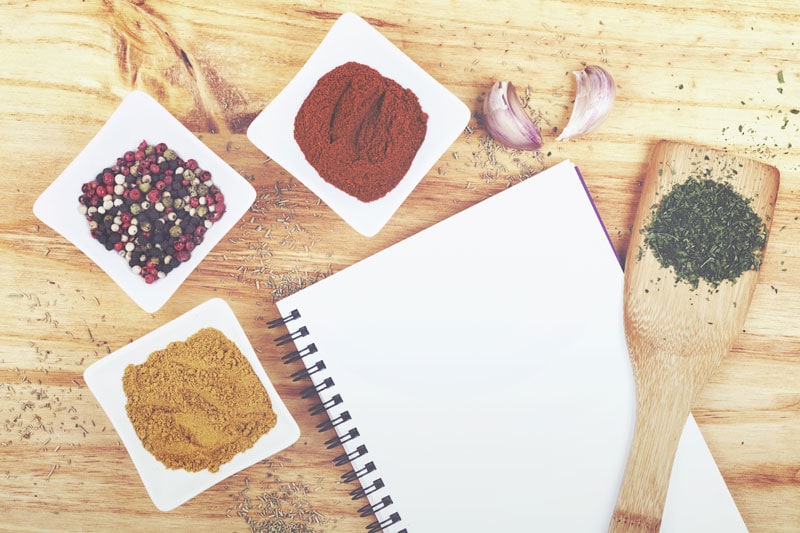
When it comes to the main ingredients, both types of mustard have a few things in common. This is the reason why the two can be used interchangeably in some cases.
- Mustard seeds: Obviously, no mustard can be complete without mustard seeds. Also, while the French condiment is usually based on brown mustard seeds, you can add some yellow mustard powder to your homemade Dijon mustard recipe for a more appealing appearance. Unfortunately, the reverse is not true.
- Liquid: Both types can use water for diluting. On the other hand, people usually use vinegar, wine, beer, oil, or even ginger ale for more flavors.
- Extra ingredients: with a spin of salt, you can complete your mustard. But if you want to make it more flavorful, some additional herbs and spices will go a long way. Paprika, garlic powder, and allspice are among the most common suggestions.
Main Uses

Later in this article, you will know how Dijon mustard differs from the other type in terms of flavor. Despite those disparities, both varieties of mustard have very similar applications. In fact, you can replace one with the other according to the 1:1 ratio.
That means you can use any type of mustard according to your preferences or what you have on hand. While hot dogs are better with yellow mustard, most people prepare deviled eggs with Dijon mustard, you can do the opposite without making the dishes any less delicious.
However, the substitution is an estimation rather than a precise calculation. The final result may fluctuate due to many factors. Therefore, you should taste and adjust accordingly.
Health Benefits
Both types of mustard are rich in glucosinolates, the natural components responsible for their pungency. Those substances have impressive anti-inflammatory and antimicrobial properties, but they can cause harmful effects on your health if consumed in large doses. (3)
In addition, you can gain powerful antioxidants and a healthy amount of minerals (such as zinc, manganese, and iron) by flavoring your food with either Dijon mustard or yellow mustard.
But if you use store-bought products, remember that manufacturers occasionally add sweeteners, like honey and syrup, to their products, increasing the calorie and sugar content.
How About The Differences Between Dijon Mustard And Yellow Mustard?
Now is the time for the crux of the matter: what sets Dijon mustard and yellow mustard apart from each other. You can look over this table to quickly grasp the differences:
Color
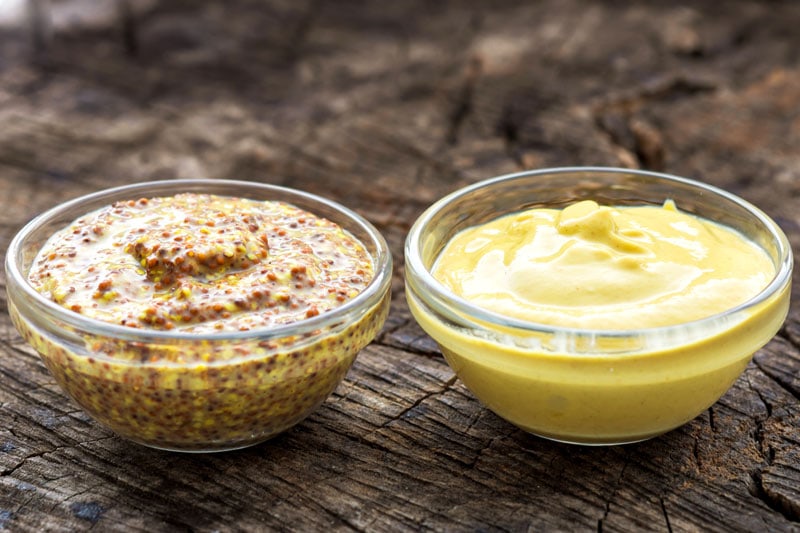
The easiest way and most outstanding characteristic you can see between the two of them is the shade of colors.
Because of turmeric, American mustard has a stunningly bright yellow appearance that stands out on any food background. Its hue also comes partly from the yellow mustard seeds.
On the other hand, Dijon mustard doesn’t have such a vibrant color. Besides brown mustard seeds, it may include yellow ones. As a result, you often see a pale yellow or yellow-tinged brown, depending on the original ingredients.
Texture
Dijon mustard has a very cream-like texture. Its liquid content is relatively lower than that of yellow mustard, making this condiment thicker and more solid. On the other hand, yellow mustard is more on the fluid side and can be shaken or squeezed out of the bottle.
Also, while Dijon mustard can be available in whole grain or finely ground forms, the former is more popular. By contrast, yellow mustard seeds are usually pulverized into a fine powder before being turned into the iconic American condiment.
Flavor
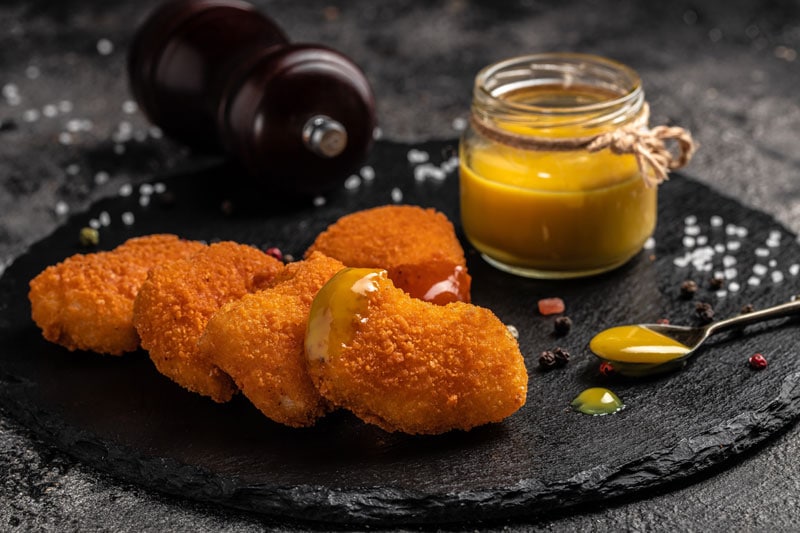
The taste of Dijon mustard has a full spectrum of complex and intense flavors, with a sharp tartness as the main flavor. Besides the iconic pungency of mustard, you can also detect spicy notes, depending on the extra ingredients.
Meanwhile, yellow mustard is more subtle, boasting a milder level of tanginess and bitterness. Many people can easily enjoy this one at first bite, while Dijon mustard is an acquired taste for some because of its stronger flavor.
The main reason behind this difference stems from the main ingredient of mustard. The brown or black mustard seeds that go into Dijon mustard have a more powerful flavor than yellow ones, making the resulting products shaper and spicier.
Whole grain Dijon mustard has an even stronger and more pungent flavor, which can remind people of green mustard. In addition, the French condiment usually boasts a mixture of vinegar and white wine, which gives it more acidity than the American variety.
This detailed tutorial on creating homemade Dijon mustard will show you how flavorful this condiment is.
Price And Availability
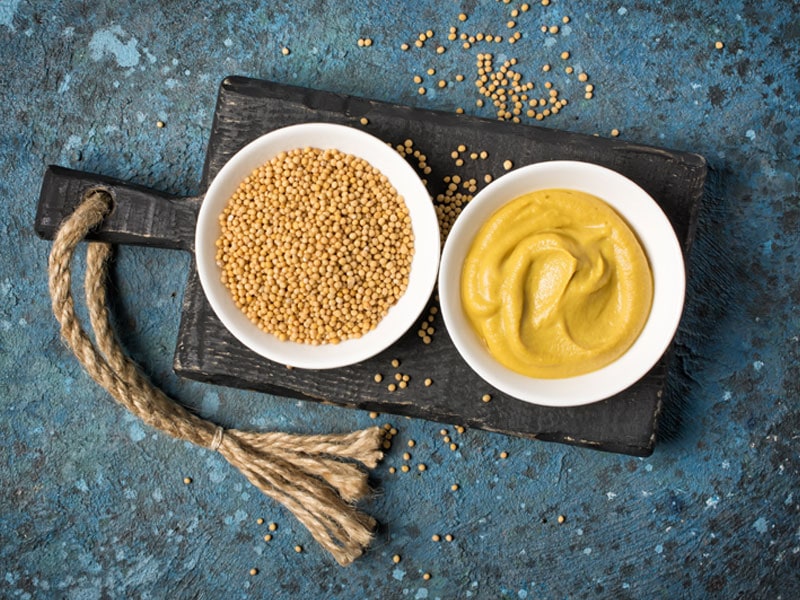
Here is bad news for you: If you buy Dijon mustard from a local store or supermarket, it is likely to be not genuine.
By a combination of laws, both old and modern, only products made in Dijon or, in some cases, France can be recognized as real Dijon mustard. One of the other additional requirements is that the ingredients have to be locally sourced mustard seeds.
Therefore, the quantity of authentic Dijon mustard sold annually is not high, not to mention occasional shortage. Unsurprisingly, this French condiment is much more expensive than its brethren from America.
So why is your Dijon mustard so cheap? Because it doesn’t come from Dijon and just follows the same recipe as the true specialty: a mixture of black mustard seeds with vinegar, white wine, etc.
The condiment may have a similar taste or not, but it never boasts the same prestige as the real deal.
Here is a more detailed explanation of the exorbitant price of Dijon mustard.
Substitutes For Dijon Mustard You Can Use For Your Meals
In case you can’t eat Dijon mustard for any reason, whether it isn’t available in your kitchen or does not fit your appetite, think about my top alternatives down here.
1. Stone Ground Mustard
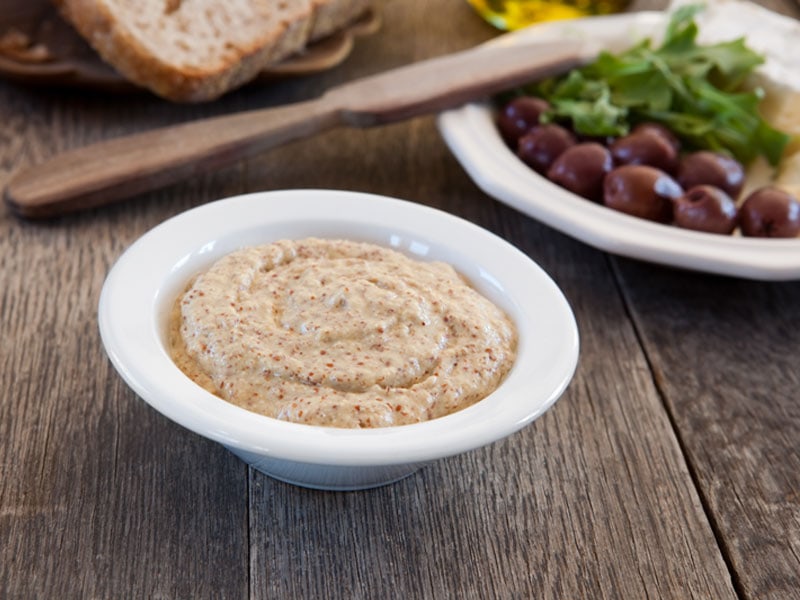
Made from brown mustard seeds like Dijon mustard, this variety is an excellent replacement for it. People prepare stone ground mustard by crushing brown mustard seeds with water and vinegar to create a coarse paste. The process may involve millstones, hence the name.
Though its heat and tang are stronger than those of the fancy mustard from French, you can use a 1:1 substitution ratio with no problem, especially for dressings and marinades.
2. Honey Mustard
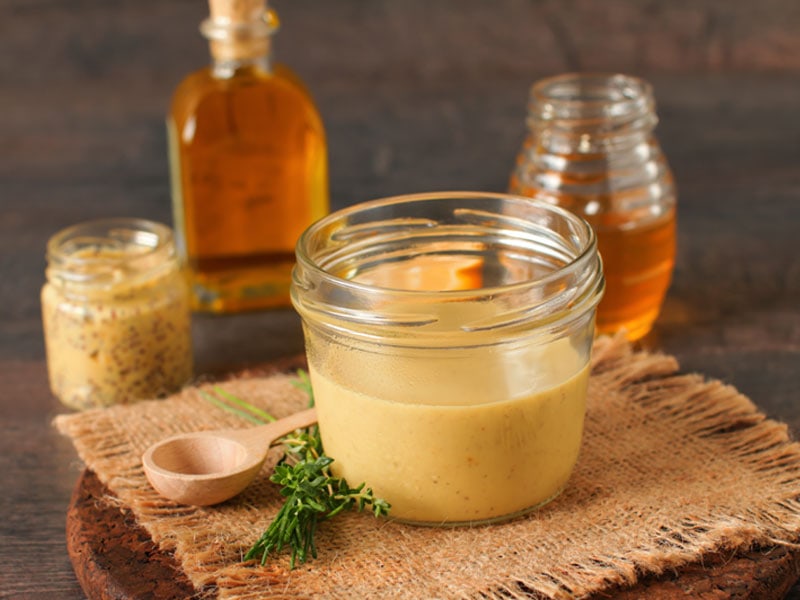
Despite being much sweeter than Dijon, honey mustard is still worth considering when it comes to white meat, pork, or chicken. This creamy condiment is also ideal for salad dressings or sauces for savory dishes.
In fact, honey mustard is often made from Dijon/ yellow mustard. Simply mix either or both of them with mayonnaise, honey, and spices, and you will have some killer mustard to indulge your sweet tooth.
3. English Mustard
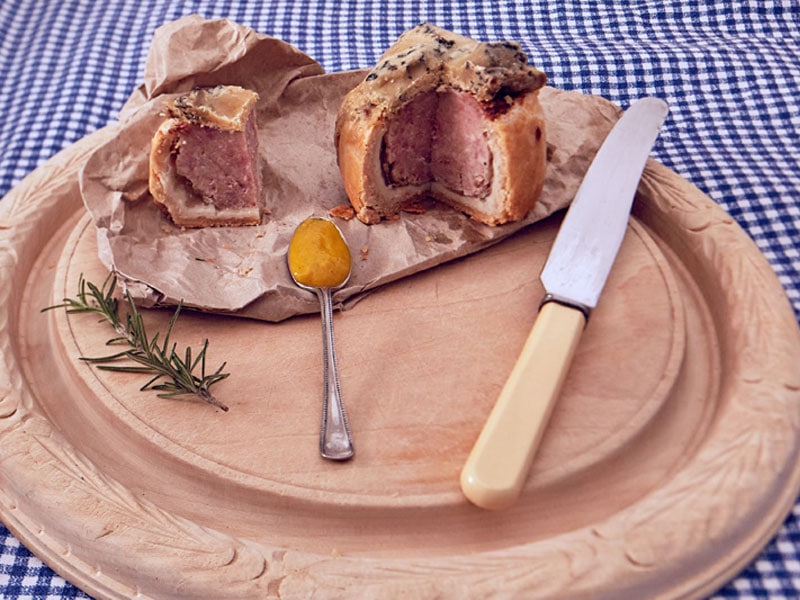
Also known as hot mustard, English mustard is usually described as a cross between yellow mustard and Dijon mustard. This hot variety of mustard suits sandwiches, roasts, seafood, mashed potatoes, and more.
4. German Mustard
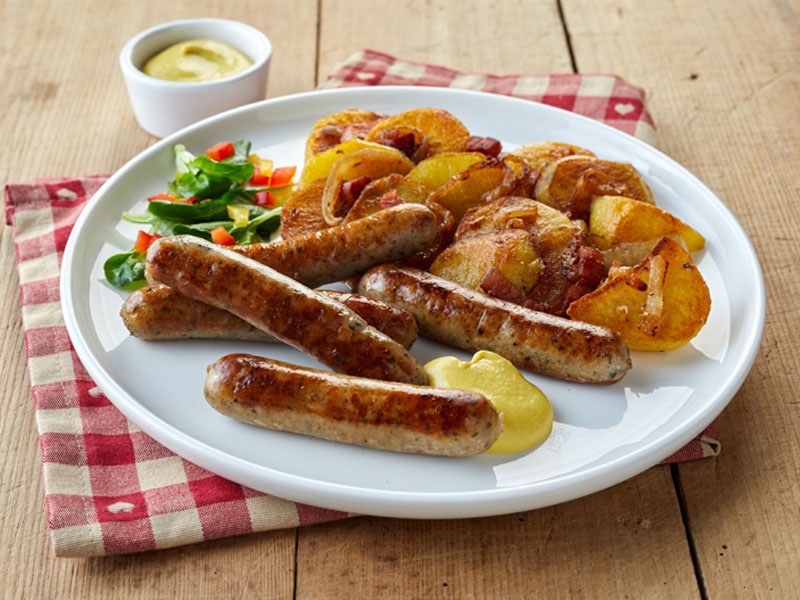
Using a variety of mustard seeds, German mustard gives a lot of texture with more spice than Dijon mustard. While not recommended to substitute as an ingredient for salads or marinades, it is a perfect condiment for meats, sausages, hot dogs, or baked pretzels.
5. Spicy Brown Mustard
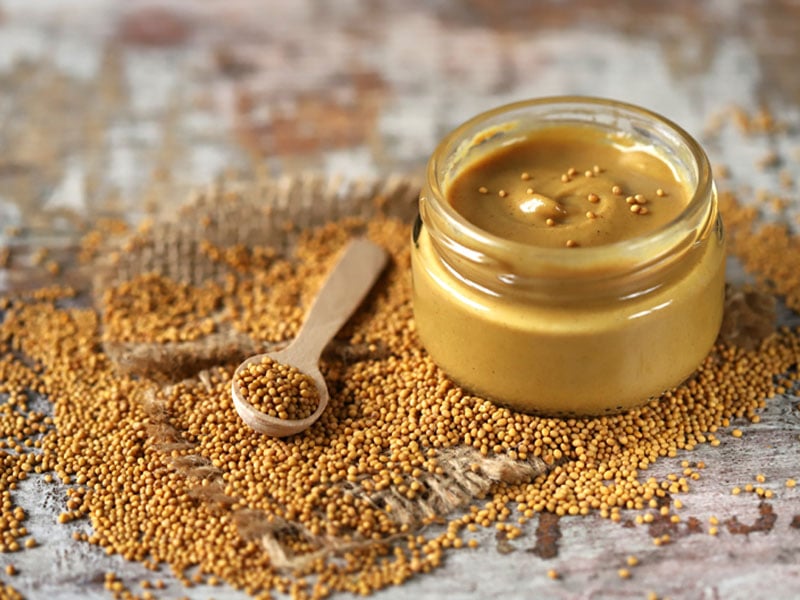
In addition to brown mustard seeds, this kind of mustard also includes various kinds of spices. It creates a bolder and richer flavor compared to Dijon. Therefore, the substitution ratio of spicy brown mustard to Dijon should be less than 1:1.
6. Wasabi
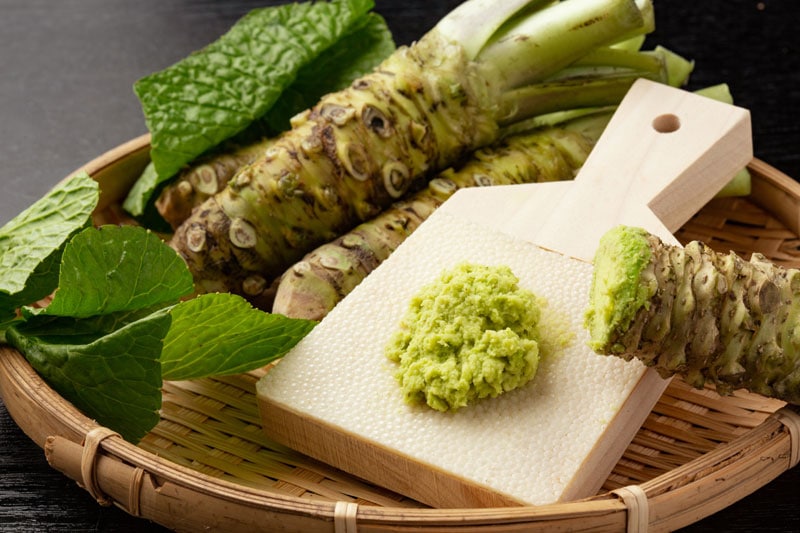
Hailing from Japan, wasabi (or Japanese horseradish) is famous for its incredible heat, so use less than the amount of Dijon mustard you want to replace. You can finely grind dried wasabi plants or buy wasabi powder directly, then mix it with a suitable amount of water.
7. Mayonnaise
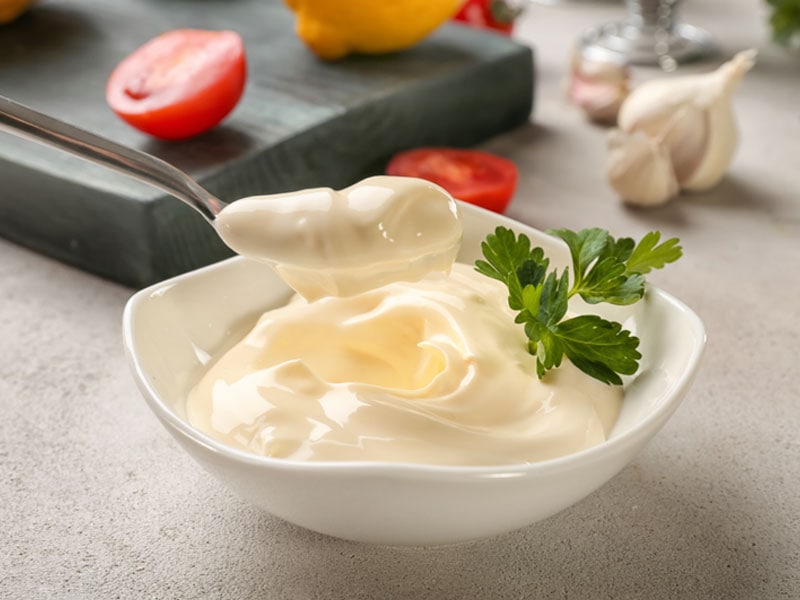
Mayonnaise can be a versatile substitute for any sauce and dressings, not just Dijon mustard, as long as you like its mild, slightly sour taste and creamy texture.
From burgers, French fries, and BBQ meat to salads, you can use this condiment freely because it does not have complex flavors like other types of mustard. Moreover, you can make mayonnaise sourer or spicier by mixing it with ketchup or chili sauce.
FAQs
Here are the answers to some popular questions about mustard that usually pop up in many people’s minds. Read on to learn more about how to use mustard.
What To Take Away After The Comparison?
I bet you are now well-versed in telling apart yellow mustard and Dijon mustard. The latter has more impressive and stronger flavors, but it is harder to find and more likely to hurt your budget. Still, depending on your taste, which of them fits your dishes is up to you.
Do you still have questions about these two types of mustard? Don’t hesitate to leave them in the comment section below. I have a small favor to ask: If you think this post cuts the mustard, please share it with your friends. Many thanks and have a nice day!
Reference
- What are the health benefits of mustard seed? (no date) WebMD. WebMD.
- Dijon mustard (2022) Wikipedia. Wikimedia Foundation.
- Bischoff, K.L. (2021) Glucosinolates, Nutraceuticals (Second Edition). Academic Press.

